This post may contain affiliate links. Please read our disclosure policy.
This easy step-by-step guide will teach you exactly how to make pie crust that’s buttery, flaky, and never soggy. We’re walking through the method, how to blind-bake properly, how to flute clean edges, plus troubleshooting tips that guarantee success every single time.
Whether you’re prepping for the holidays or just craving pie on a random Sunday (hi, same), this all-butter pie crust will become your forever go-to.
If you’ve struggled with pie crust before, don’t stress. The secret is temperature control, minimal water, and not overworking the dough. You’ve got this.

Let’s Chit Chat!
I’ve made so many different crust, tart dough, pâte sucrée, pâte brisée, but for a long time I avoided classic American butter pie crust because I thought it was heavy and fussy.
Once Thanksgiving I decided to finally test my own method… and it was the star of dinner that night! I filled it with silky cranberry curd, baked it again, and topped it with swiss meringue, and three people asked for the recipe on the spot!! Store-bought could NEVER!! My homemade crust is flaky, buttery, super easy to roll, golden, and sturdy enough for curds, custards, and fruit pies!
Ingredients You’ll Need (and Why)
No weird ingredients, just classics done right.
- All-purpose flour – Creates structure without making the crust tough.
- Salt + a little sugar – Balances flavor. Sugar helps browning. Omit sugar only if doing savory pie.
- Cold unsalted butter – The star of the recipe. Cold butter = steam pockets = flaky layers. We’re not using shortening, this is a pure butter crust.
- Ice water – Adds just enough moisture so the dough holds together. (Cold matters! We want flakes, not greasy dough)
Full measurements are in the recipe card below.
Equipment
You can make this crust:
- in a stand mixer with paddle
- in a food processor (pulse only!)
- or by hand with a pastry blender (pastry cutter) or even your fingers
Tip from working at a French bakery, by hand gives you the best control, so you don’t over-cut the butter.
How to Make Pie Crust Step-By-Step
- Mix dry: Whisk flour, salt, and a little sugar in a large bowl.
- Cut in butter: Add very cold cubed butter; press into pea-to-nickel size pieces (keep some visible bits).
- Add water: Drizzle in ice water 1 Tbsp at a time, tossing until the dough just holds when squeezed (shaggy, not smooth).
Table of Contents
- Ingredients You’ll Need (and Why)
- Equipment
- How to Make Pie Crust Step-By-Step
- How to Flute Pie Crust (Easy Method)
- Best Pies for This Crust
- Tips for Extra-Flaky All-Butter Pie Crust
- Troubleshooting Pie Dough (Real Fixes)
- Make-Ahead, Storage, and Freezing
- Best Pies to Use This Crust For
- Frequently asked questions
- Easy Homemade Pie Crust Recipe
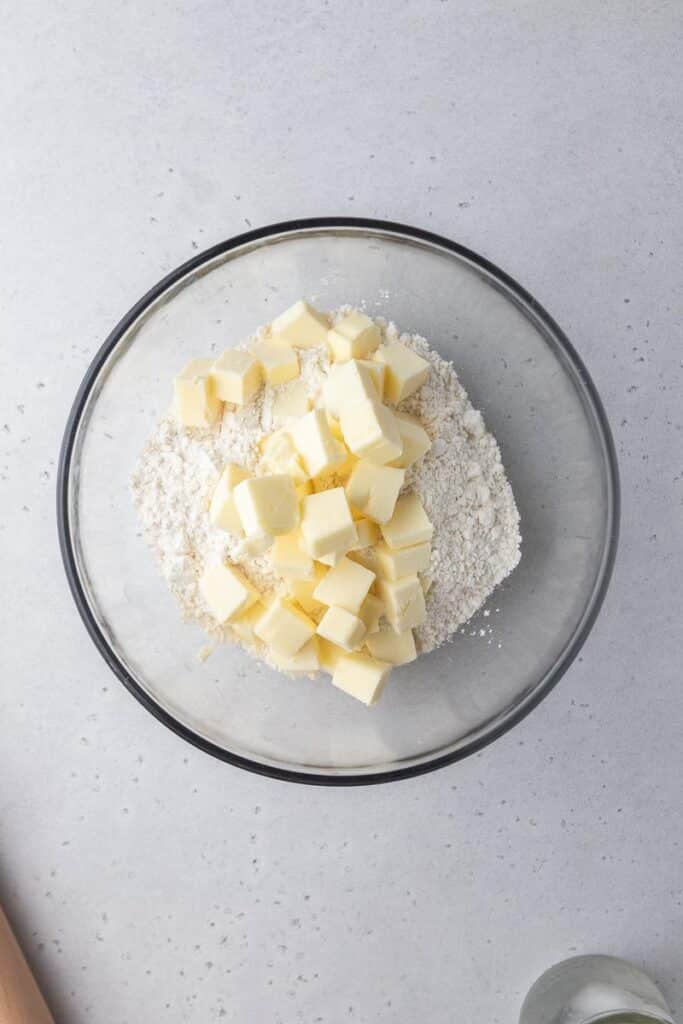
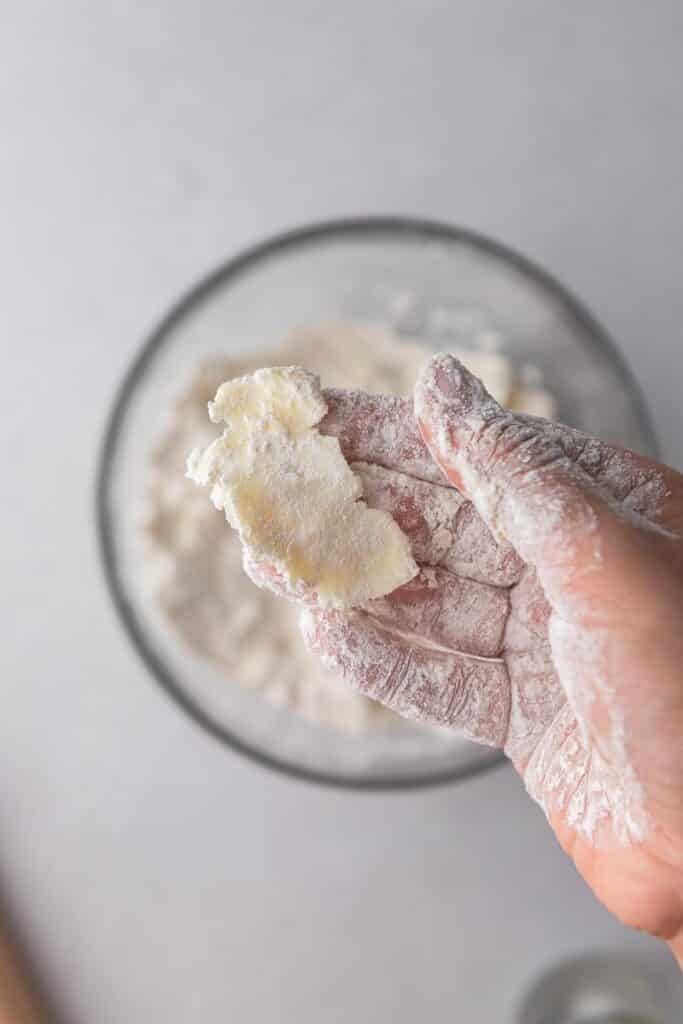
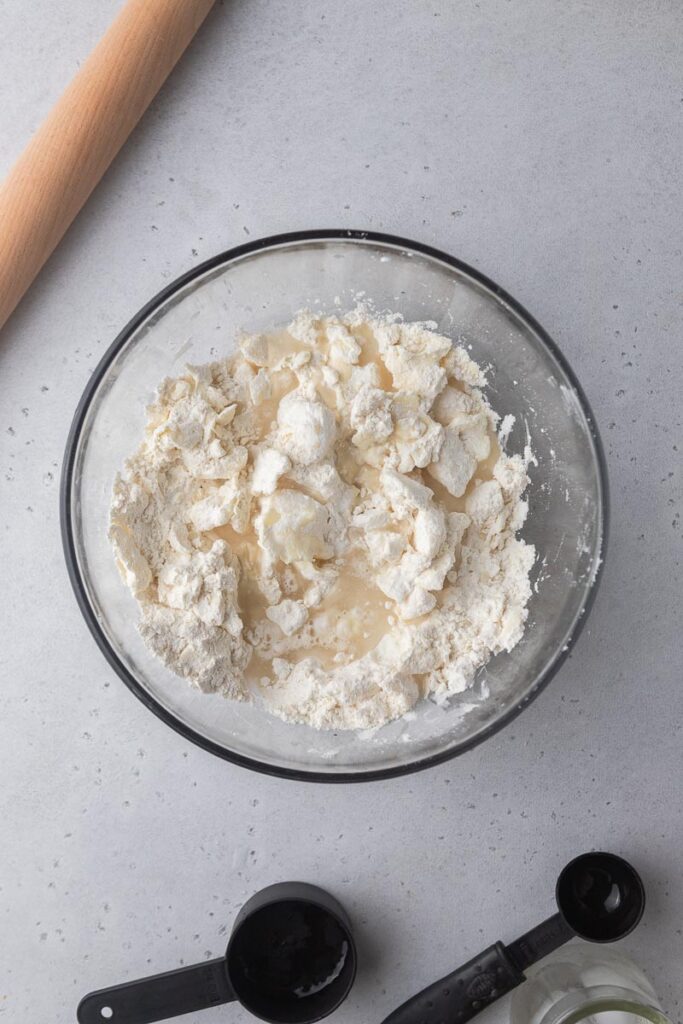
- Chill #1: Press into a disc, wrap, and refrigerate 1 hour.
- Optional lamination (extra flake): Roll into a rough rectangle, fold like a book, fold again; re-shape into a disc.
- Roll: On a lightly floured surface, roll to a 12–13-inch round (~⅛-inch thick), lifting/rotating as you go.
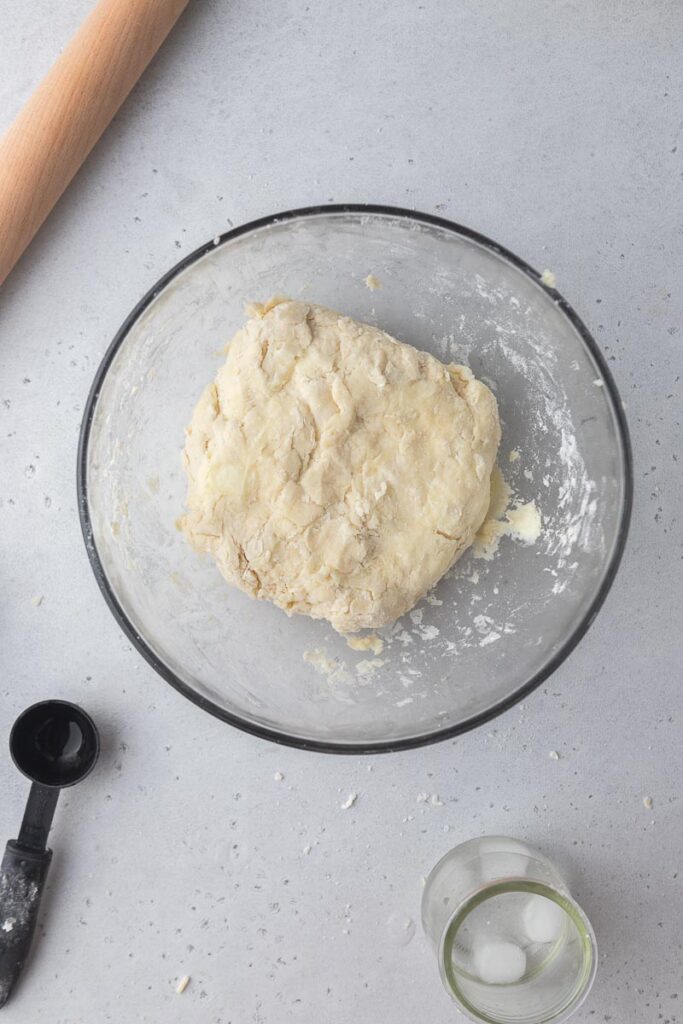
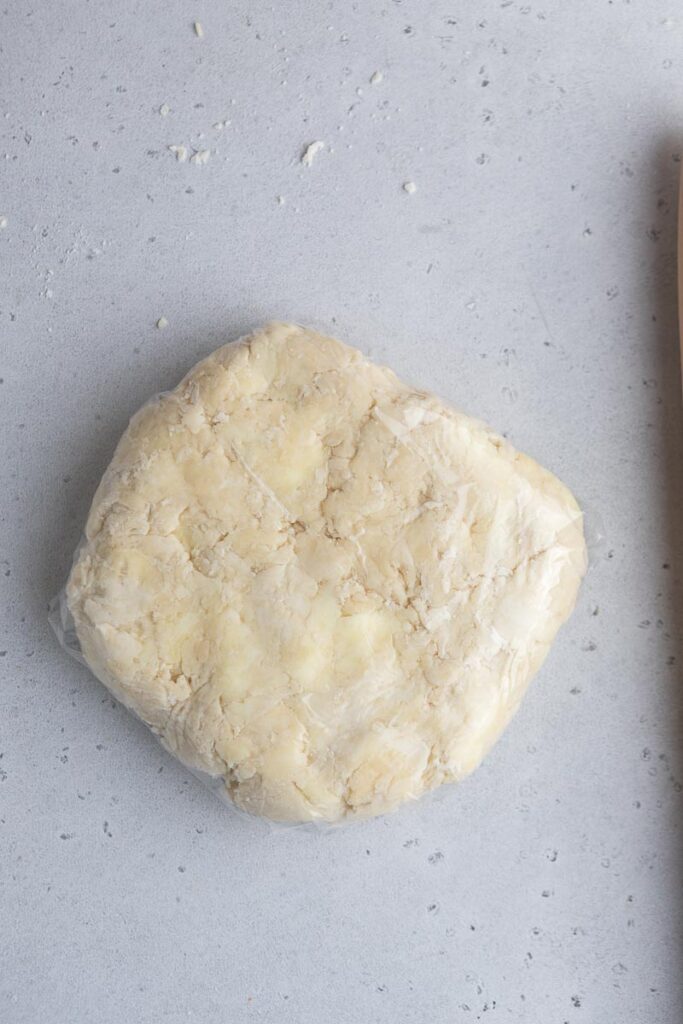
- Pan: Ease (don’t stretch) into a 9-inch pie plate. Trim to 1-inch overhang, tuck under for a thick rim.
- Flute (quick): Hold thumb + index finger on the outside edge; press your opposite knuckle from the inside to form ridges. Repeat around. (check below for a step by step tutorial)
- Chill #2: Freeze the shaped crust 30 minutes (prevents shrinking).
- Blind bake: Line with parchment and pie weights. Bake at 425°F for 15 min. Remove weights and bake 10–15 min more until deep golden.
- Seal: Brush the hot crust with egg white to waterproof. Cool before filling.
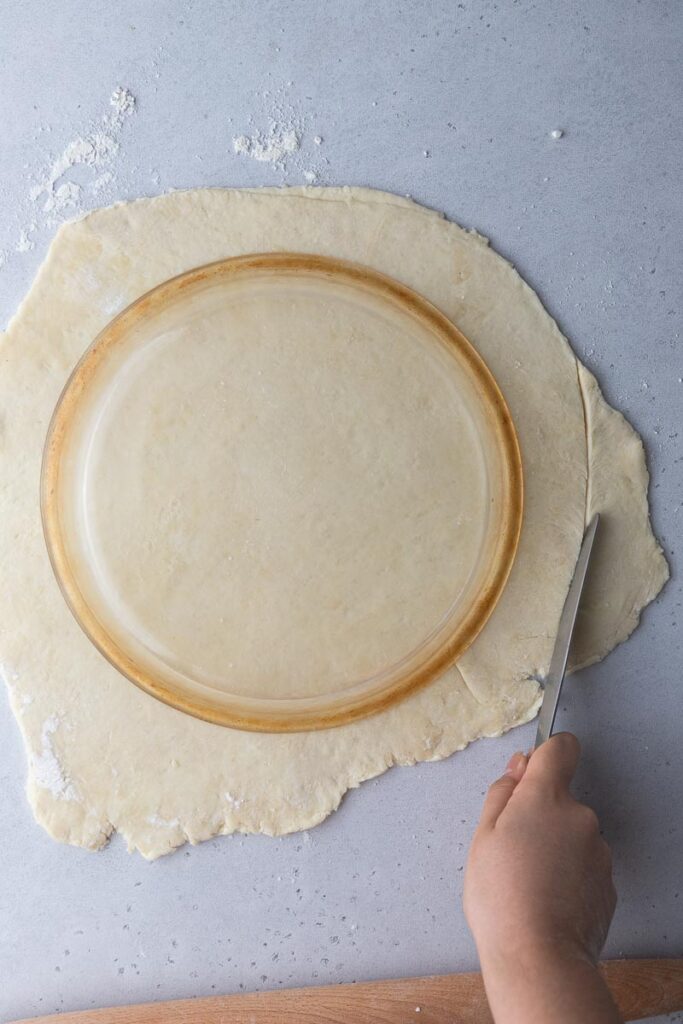

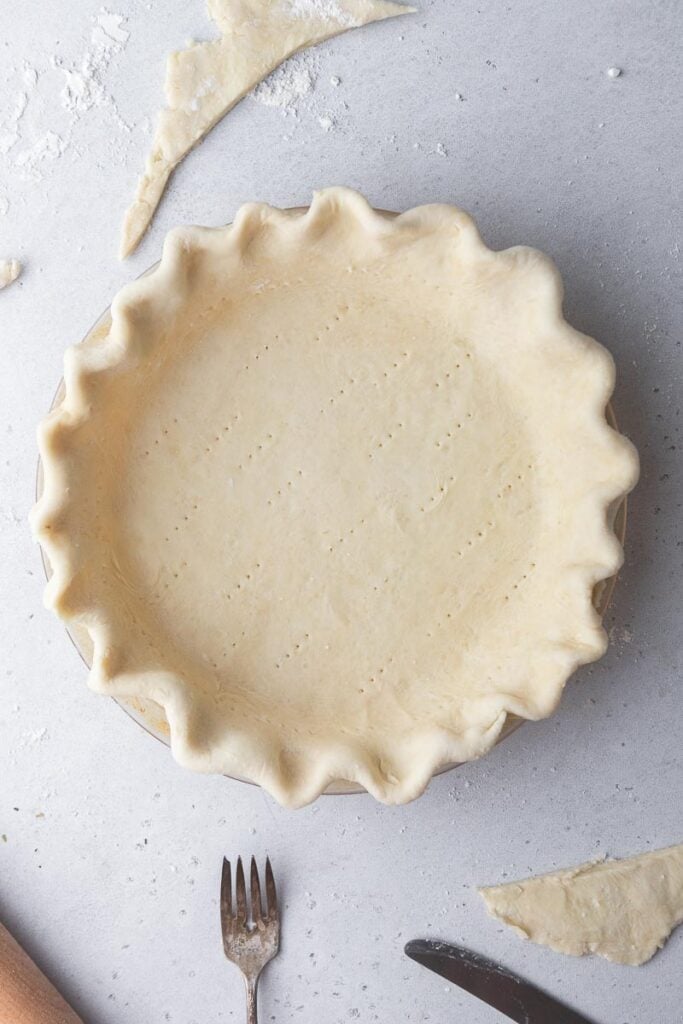
How to Flute Pie Crust (Easy Method)
Fluting pie crust looks fancy, but it’s actually very simple. Once your dough is fitted into the pie dish and the overhang is tucked under for a thicker rim, follow these steps:
- Form your guide: Place your thumb and index finger about an inch apart on the outside edge of the crust.
- Shape the wave: Using the knuckle of your opposite hand, press the dough from the inside outward between your two fingers to create a ridge.
- Repeat: Continue around the entire rim, keeping spacing even so you get a beautiful, consistent fluted edge.
Tip:
If you have long nails, skip pressing with your fingertip, the knuckle method works perfectly and keeps the dough smooth.
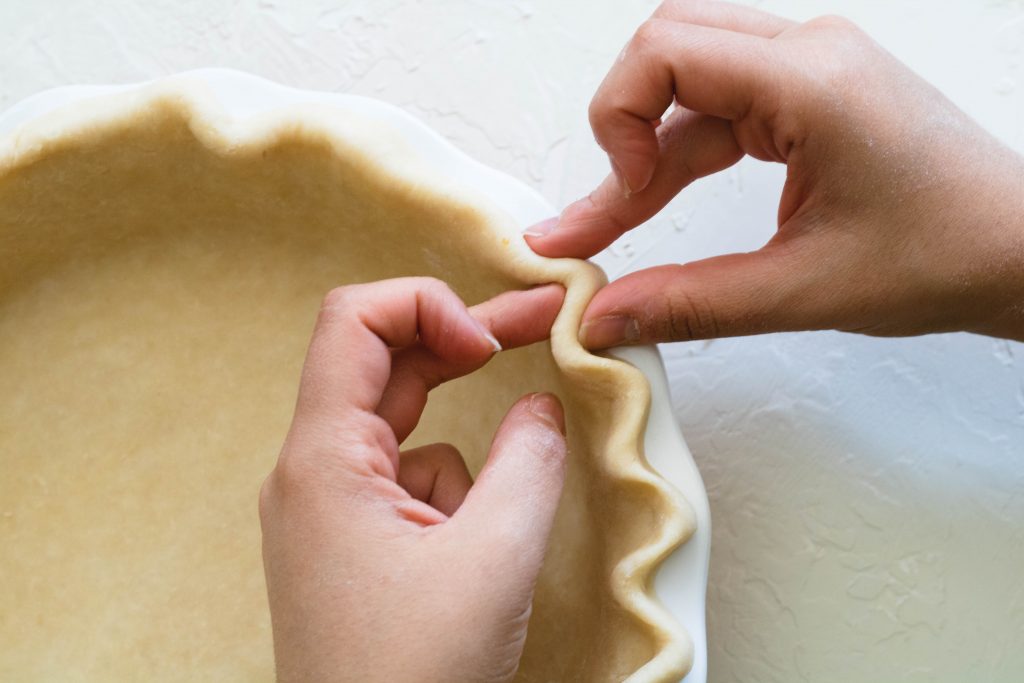
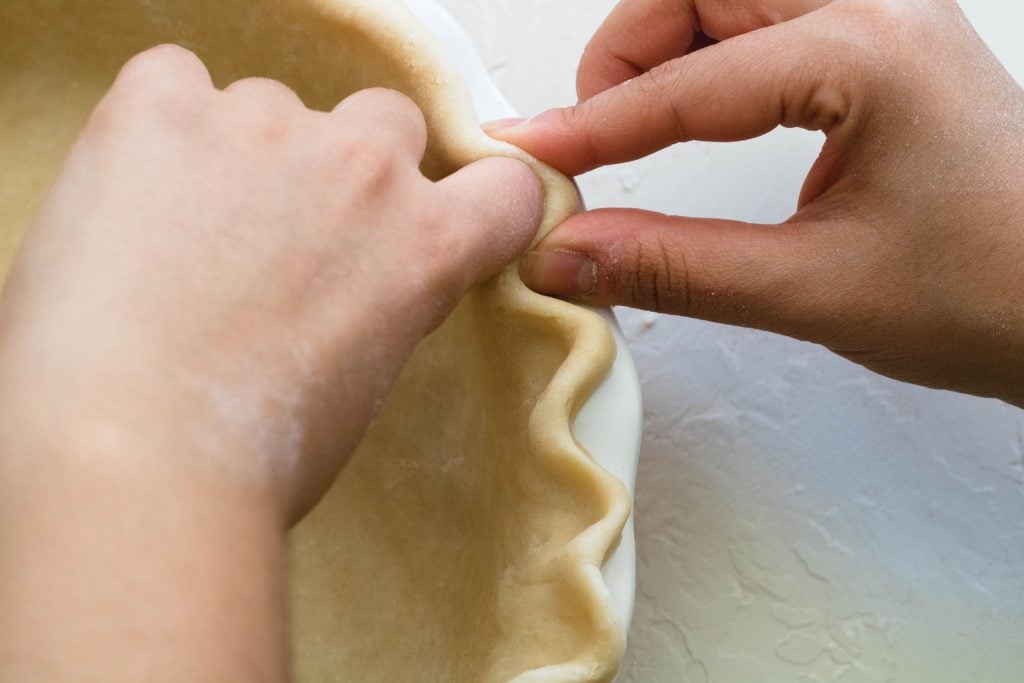
Best Pies for This Crust
Try it with pumpkin pie, pecan pie, apple pie, brownie pie, lemon pie, chocolate cream pie, any quiche or even chicken pot pie!
Tips for Extra-Flaky All-Butter Pie Crust
- Keep butter and water ice cold
- Work fast, don’t melt the butter
- Chill after mixing
- Freeze before baking
- Use pea-size + flat butter flakes
- Blind bake fully because a pale crust = raw taste
- Egg white wash = no soggy bottoms
Troubleshooting Pie Dough (Real Fixes)
- Crust shrank: You stretched the dough or skipped the freeze. Ease it into the pan; freeze 30 minutes before baking.
- Crust is tough: Too much water or mixing. Keep it shaggy. Stop as soon as it clumps.
- Bottom is soggy: Blind-bake longer and brush the hot crust with egg white. Stay away from watery fillings.
- Butter leaked: Dough warmed up. Work faster, chill more often, and keep butter in visible pieces.
- Edges browning too fast: Shield with foil or a pie guard halfway through your baking time.
- Dough cracks when rolling: It’s just too cold. Rest 2–5 minutes and try again.
Make-Ahead, Storage, and Freezing
- Fridge: Wrapped dough disc up to 2–3 days
- Freeze: Up to 3 months (disc or shaped in pie plate). Thaw overnight in fridge before rolling.
- Blind-baked crust: Store at room temperature for up to 3 days wrapped and cooled.
Best Pies to Use This Crust For
Frequently asked questions
Cold butter and cold water, minimal handling, and visible butter pieces. Optional quick folds (lamination) boost layers.
Use butter for flavor and flake. No shortening needed. If you must use shortening, you can use up to 25% of the fat content of this recipe but it can soften edges, and you’ll lose buttery taste.
Don’t stretch dough into the pan, chill the shaped crust, then freeze 30 minutes before baking. Bake on middle/lower rack using pie weights.
Too much water or overworking the dough can do that. Keep ingredients cold and stop mixing once it clumps.
Yes. Chill 1 hour after mixing, and again 30 minutes once it’s in the pie plate. This relaxes gluten and firms butter keeping your crust from shrinking and giving you beautiful flaky layers.
Yes. Wrap the disc tightly and freeze up to 3 months. Thaw overnight in the fridge before rolling.
Keep butter cold, leave pea-to-nickel sized pieces in the dough, and do one quick fold (lamination) after the first chill.
Blind bake fully until golden, brush the hot crust with egg white to seal, and avoid overly wet/frozen fillings.
Yes, but pulse in short bursts and stop while visible butter pieces remain. Over-processing kills flake.
Dried beans or rice. Beans become permanent pie-weights; rice can be reused once for cooking, or saved just for pies.
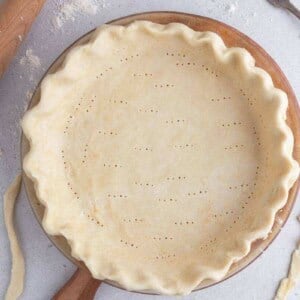
Easy Homemade Pie Crust
Ingredients
- 1⅔ cups all-purpose flour plus more for dusting
- ½ tsp salt
- ½ Tbsp granulated sugar
- 12 Tbsp unsalted butter chilled and cut into ½-inch cubes
- 5-7 Tbsp ice cold water
- 1 egg white lightly beaten (for sealing)
Instructions
Make the Dough
- In a large bowl, whisk together flour, salt, and sugar.1⅔ cups all-purpose flour, ½ tsp salt, ½ Tbsp granulated sugar
- Add chilled butter cubes. Working quickly, flatten each piece between your fingers until the mixture looks like coarse crumbs with some pea-sized butter pieces. Work fast to keep butter cold, this creates flakiness.12 Tbsp unsalted butter
- Add 4 Tbsp ice water and toss with your hands. Add more water 1 Tbsp at a time until dough just barely holds together when squeezed (usually 5-7 Tbsp total). It should look shaggy, not smooth.5-7 Tbsp ice cold water
- Press dough into a flat disc, wrap tightly in plastic wrap, and refrigerate for at least 1 hour.
- Laminate for Extra Flakiness (Optional but Worth It!)
- After chilling, roll dough into a rough 10×6-inch rectangle on a floured surface.
- Fold in half like a book, then fold in half again (you've folded it in quarters). Roll out and repeat once more. This creates those beautiful flaky layers.
Roll and Shape
- Roll dough into a 12-13 inch circle, about ⅛ inch thick.
- Transfer to ungreased 9-inch pie plate. Press gently into bottom and sides without stretching.
- Trim overhang to 1 inch, fold under to create a thick edge, and crimp decoratively.
- Prick bottom all over with a fork, then freeze for 30 minutes while oven preheats to 375°F.
Blind Bake (if your recipe requires this)
- Line frozen crust with parchment paper and fill with pie weights, beans, or rice.
- Bake 20 minutes on middle or lower rack.
- Remove parchment and weights. Bake another 12-15 minutes until golden brown all over.
- Immediately brush hot crust with beaten egg white to seal. Let cool completely, then fill according to your pie recipe!1 egg white
Notes
- Notes
Ice Water Tip: Use actual ice cubes in water, then measure from the glass. Colder water = flakier crust. - Keep Butter Cold: This is the secret! If your kitchen is warm, work quickly and consider chilling your bowl and flour for 15 minutes first.
- Skip the Laminating? You can skip the folding step if you’re in a hurry, you’ll still get a good crust, just not quite as flaky.
- Partially Baked Crust: For custard pies, bake 20 minutes with weights, then only 5-7 minutes without (until set but not browned). Skip the egg wash and add filling while warm.
- Make Ahead: Refrigerate wrapped dough disc for up to 2 days, or freeze up to 3 months. Thaw frozen dough overnight in the fridge.
- Double Crust: Double all ingredients and divide into two discs for lattice tops or covered pies.
- Storage: Baked unfilled crust keeps at room temp 1 day, refrigerated 3 days, or frozen 1 month.
Nutrition
Nutrition information is automatically calculated, so should only be used as an approximation.
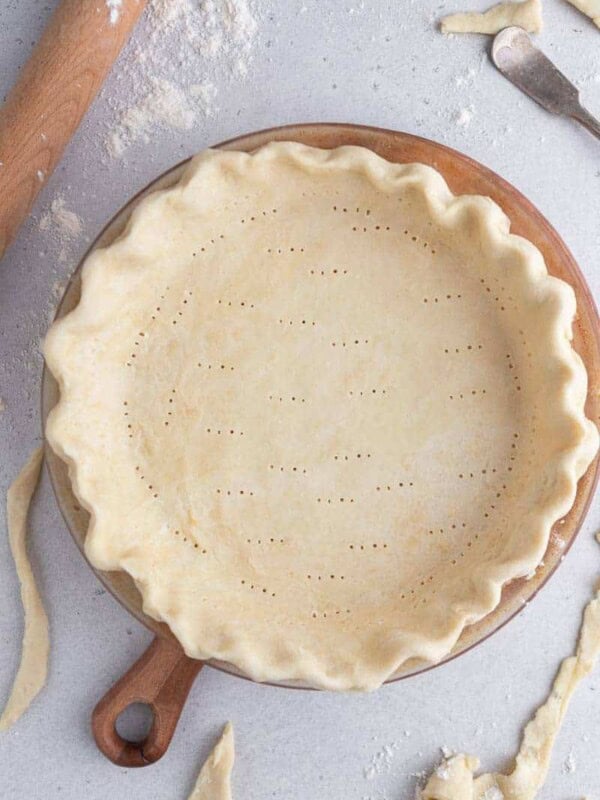
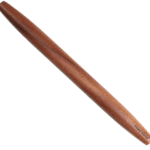
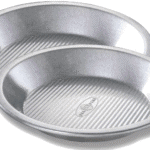
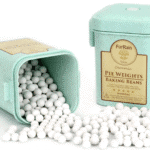
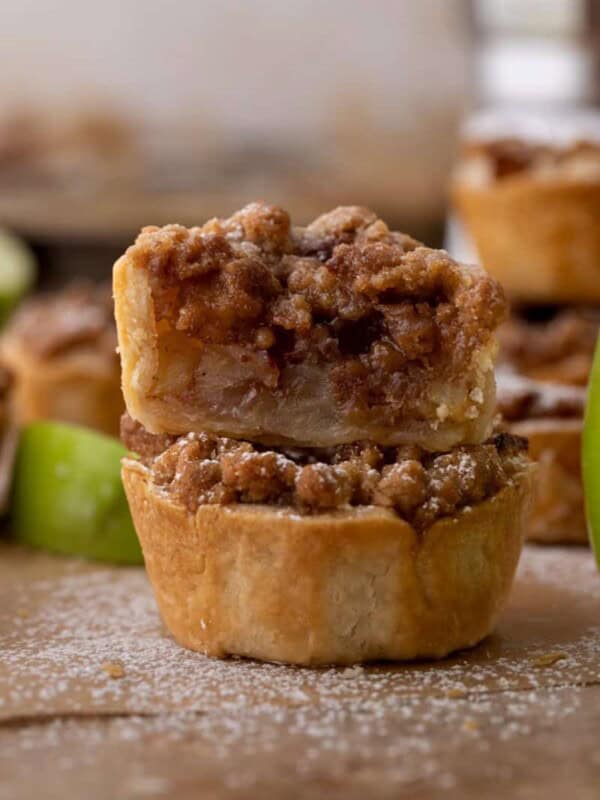
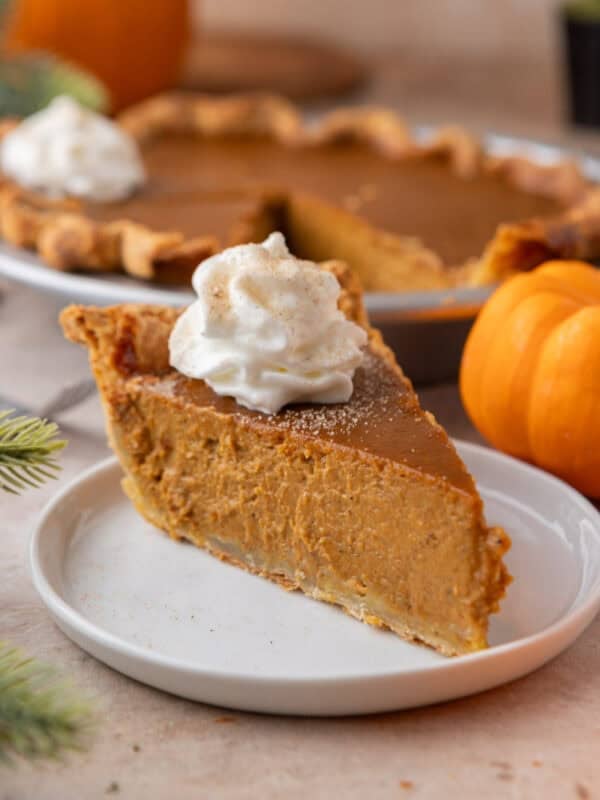
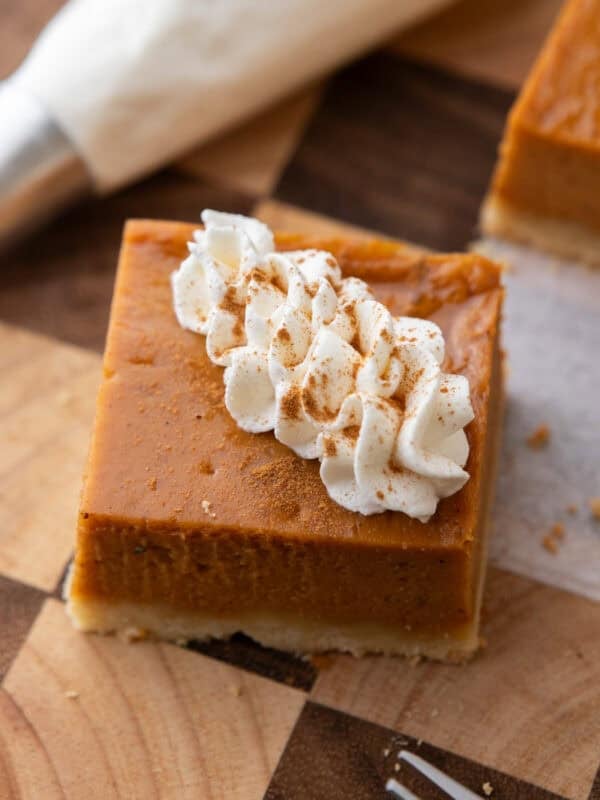
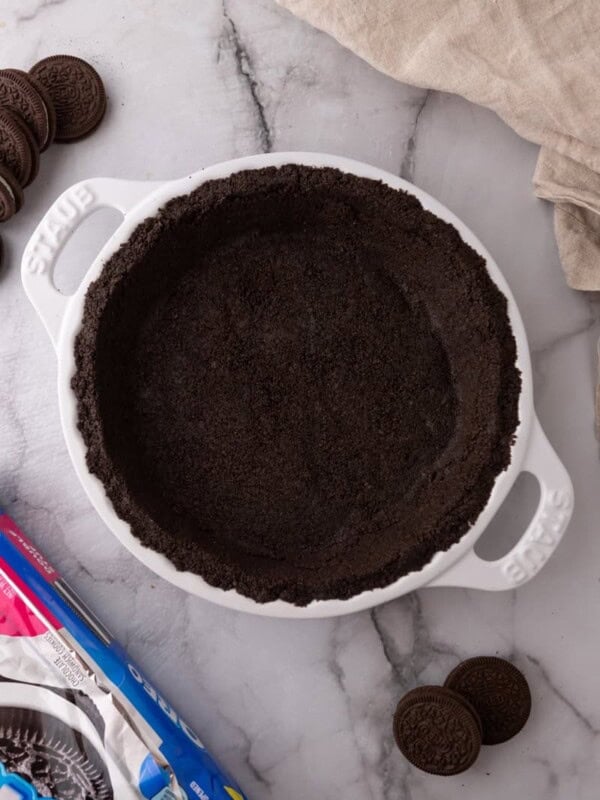
Looking forwardTo making this flaky pastry. Sounds easy easy Peasy.🥮
It’s super easy, you got this!
thank you for the recipe..
You’re so welcome!
how can I sign up for the cook book
Hi Mary!! Sign up here
https://lifestyle-of-a-foodie.kit.com/68435f058c
I want to use this pie crust for my great grandmother’s apricot turnover recipe. We usually add the filling prior to baking anything. I do one layer of crust on the bottom, add filling and one layer of crust on top then crimp two piecrust together. Could I do that with this recipe
Yes you can 🙂
This recipe has been a really special recipe for me. Those who haven’t tried the recipe should try it now.
That’s what I like to hear!!! Thanks!
Can I bake the pie crust, then add the filling and bake again
Absolutely! You can partially blind bake the crust first if your filling also needs to bake (like pumpkin, pecan, or custard pies). For that, bake the crust with pie weights for about 20 minutes, remove them, then bake another 5–7 minutes until it’s just set but still pale, not fully golden. Then, pour in your filling and continue baking according to your pie recipe.
If your filling doesn’t need baking (like chocolate cream or lemon curd), go for a fully blind-baked crust, bake until golden brown, brush with egg white to seal it, and let it cool completely before adding your filling. That keeps the bottom flaky and crisp instead of soggy.
Thanks for getting us ready for the holidays. I was just talking with my daughter if I should make some pies now and freeze so we have more time hanging out with family and less stress in the kitchen. I am thinking either apple or pumpkin will freeze best. But the pecan pie cookies at Crumbl this week look so tempting and maybe I have to make pecan pie since I can’t buy their cookies. One pie and one chocolate caramel tart are planned within the next two weeks.